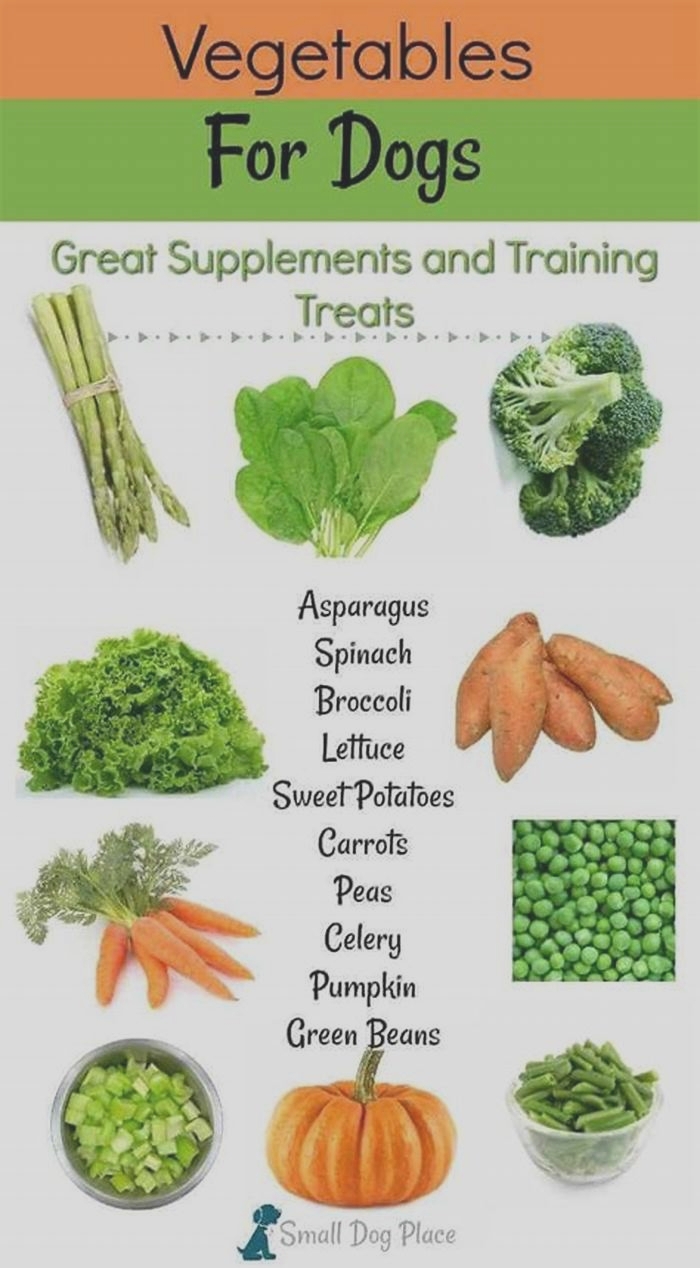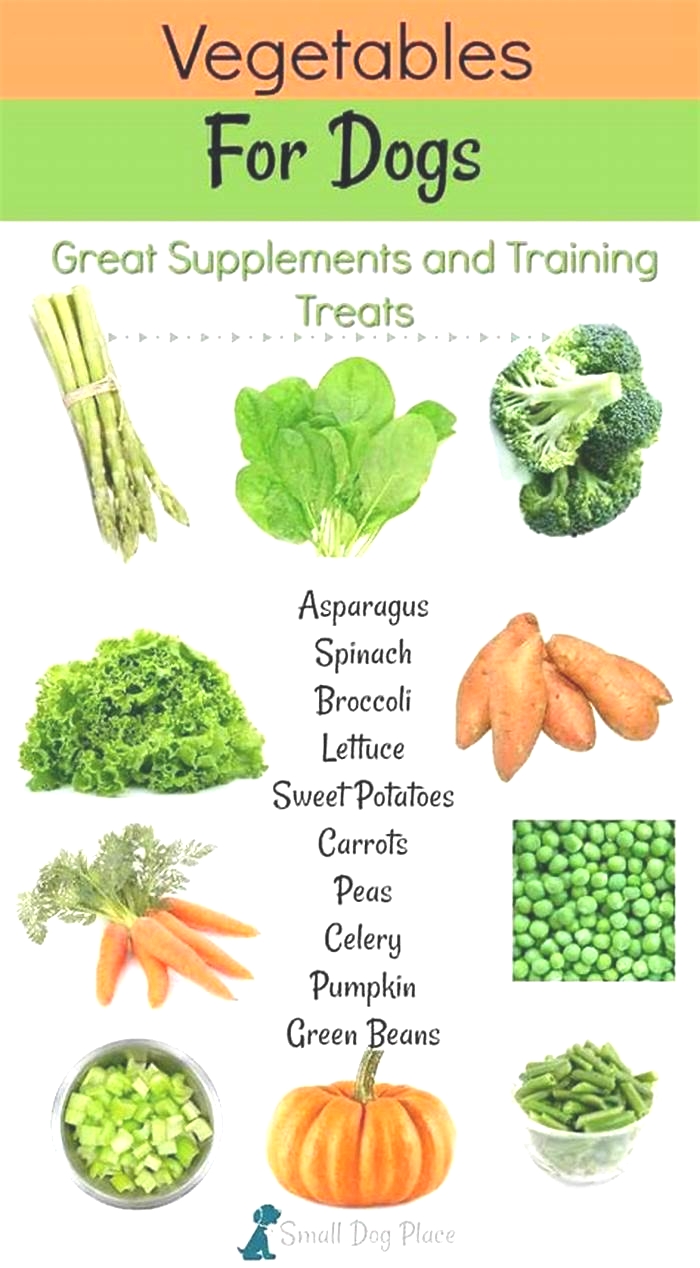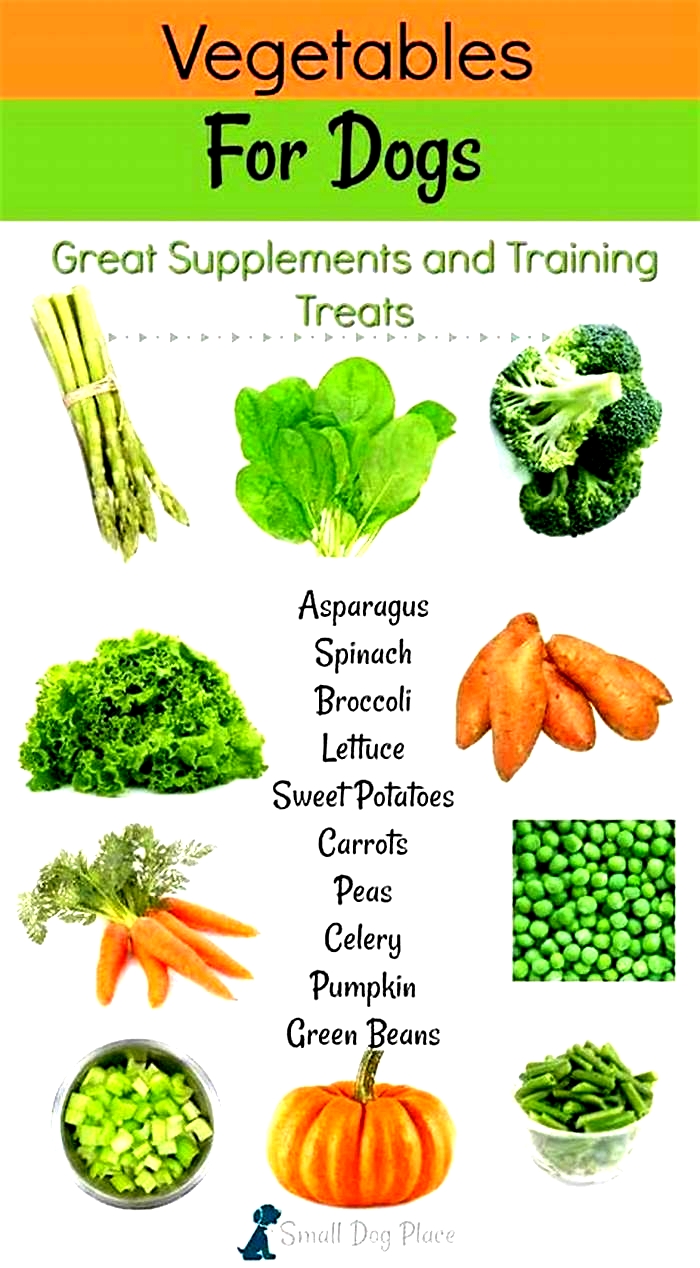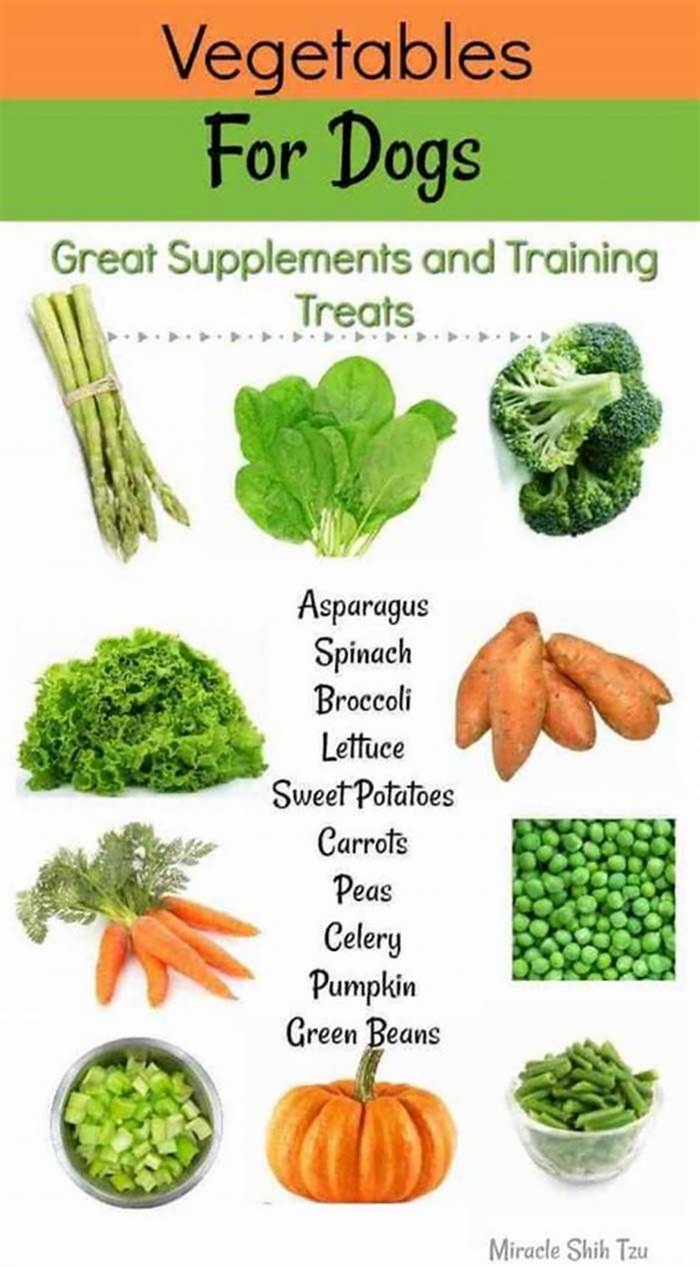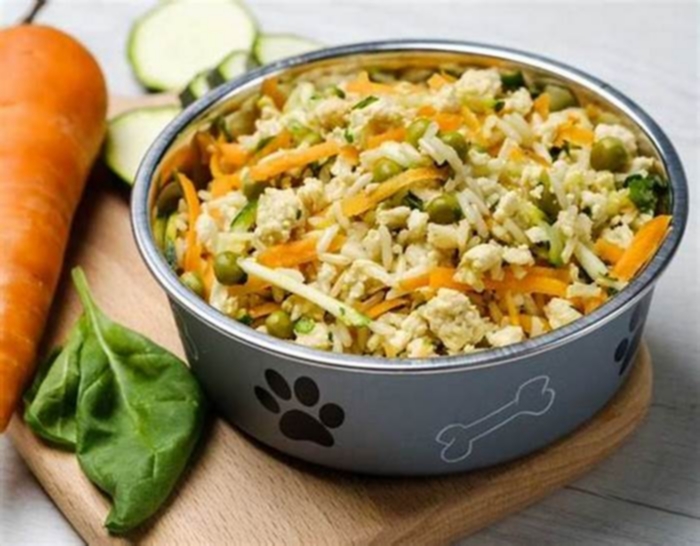What are the best vegetables for dogs
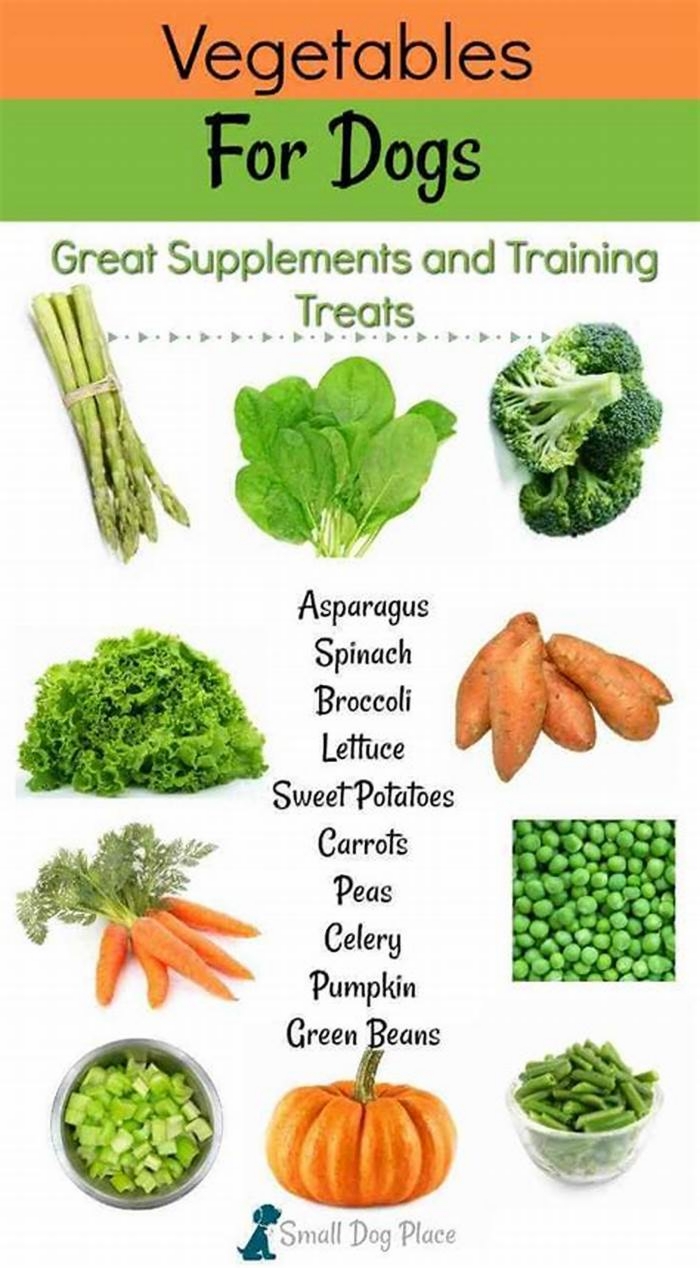
What Vegetables Can Dogs Eat?
Broccoli
Broccoliis full of fiber, but be aware that it can cause flatulence. This vegetable also has antioxidants, digestible plant protein, and vitamins and minerals such as vitamins C and K, potassium, folic acid, magnesium, sodium, and chromium.
Celery
Celery has a high water content, and its high in fiber and low in calories. It contains vitamins A, B, C, and K, plus folate, potassium, and manganese. However, celery must be de-stringed before you give it to your dog.
Green Beans
Green beanscontain vitamins A, B6, C, and K, along with protein, iron, calcium, and fiber. They are low in calories but help your dog feel full, and (bonus!) most dogs like this veggies natural sweetness. Just make sure the green beans are unsalted, as salt can harm your pup.
Cauliflower
Cauliflower is high in fiber that, while safe for your pup, can cause your dog to be extra gassy. It also contains vitamins C and K, calcium, potassium, and folate. Cauliflower is low in calories and makes for a healthy, dog-safe treat.
Lettuce
Lettuce is a dog-friendly vegetable thats low in calories, full of fiber, and 90% waterso its great for hydration. Romaine, arugula, and iceberg lettuce are all fine for your dog, but spinach and kale can be harmful in large amounts.
Carrots
Carrotsare a great choice for a healthy dog treat, but they must be given in moderation because they are high in sugar. Carrots are high in fiber and low in calories, and they contain beta-carotene, which produces vitamin A. They are also fun for dogs to crunch, and most dogs will love them because of their natural sweetness.
Bell Peppers
Any color of bell pepper is safe and healthy for your dog. Bell peppers are filled with vitamins A, B6, and E, lutein, and antioxidants like vitamin C and beta-carotene. They can help promote skin, coat, and eye health for your dog.
Zucchini
Plain raw, steamed, or cooked zucchini is safe for dogs to eat in small pieces. Zucchini is low in calories, fat, and cholesterol. Its full of fiber, antioxidants, minerals, and vitamins A, C, B6, and K.
Brussels Sprouts
Brussels sprouts are full of fiber, antioxidants, and vitamins A, B1, B6, C, and K. But beware that too many can cause flatulence and other stomach issues, like an upset stomach or diarrhea.
Cabbage
Cabbage is full of antioxidants and fiber, which helps your dogs digestive system. It also contains folate, protein, potassium, calcium, manganese, magnesium, iron, riboflavin, and vitamins A, B6, C, and K. However, cabbage can also cause increased flatulence.
Spinach
Spinach is safe for healthy dogs in small amounts. However, this leafy green contains oxalates, which can lead to kidney stones and bladder stones in susceptible dogs if eaten in large quantities. It also has isothiocyanates, which can cause severe gastric irritation in large amounts.
Mushrooms
Regular white mushrooms from the grocery storewhen completely plain and washedare safe for dogs. Do not give your dog mushrooms that are cooked with seasonings and other ingredients that are unhealthy or even toxic to dogs, such as garlic or onions. Dogs should also never eat any mushroom that you dont buy from the store.
What Vegetables Are Bad for Dogs?
The following vegetables are toxic to dogs. If your dog does eat them or a food in which they are ingredientsespecially a large amountcontact your veterinarian immediately.
Onions
Onions, leeks,garlic, and chives are all part of the Allium plant family and are toxic to dogs and cats alike. Eating onions can cause vomiting, diarrhea, stomach pain, and nausea. It can also make your dogs red blood cells rupture. If your dog eats any onions, contact your veterinarian right away.
Wild Mushrooms
Any wild mushroom should always be avoided. There are at least 50,000 different species of mushrooms in the world, and around 100 of them are poisonous to dogs. Be careful to check your backyard for mushrooms if your dog tends to forage. If you stumble across some wild mushrooms, keep your dog far away from them.
The Best Vegetables for Dogs: Benefits and Serving Tips
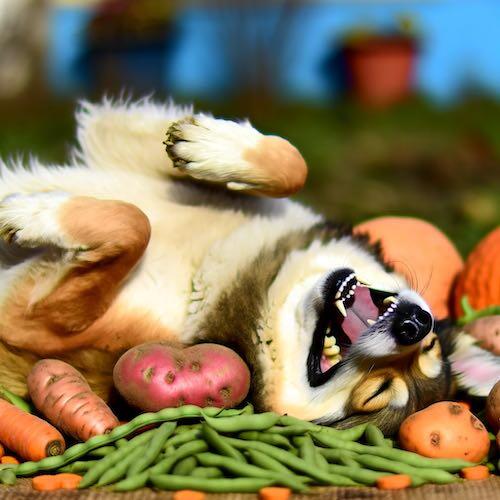
The Best Vegetables for Dogs: Benefits and Serving Tips
Incorporating vegetables into your dogs diet can significantly enhance their health and well-being, offering a myriad of benefits ranging from improved digestion to a boosted immune system. The Best Vegetables for Dogs: Benefits and Serving Tips provides a comprehensive guide to the most nutritious and safe vegetables that can be included in your furry friends meals. Understanding which vegetables are best, how they benefit your dog, and the safest ways to prepare and serve them is crucial for any pet owner looking to optimize their pets health through a balanced and varied diet.
Read More: Top 10 Best Rated Dog Food Brands
Vegetables like carrots, green beans, and sweet potatoes are not just human superfoods; theyre also fantastic for dogs, providing essential vitamins, minerals, and fiber. These natural, low-calorie treats can support weight management, promote healthy skin and coat, and even enhance eye health. However, not all vegetables are created equal in the canine world. This guide helps you navigate through the best options, offering insights into each vegetables unique nutritional benefits and how they can address specific health concerns.
We delve into important tips for serving vegetables to dogs, emphasizing portion control, preparation methods, and choking hazard prevention. Whether youre looking to introduce new snacks into your dogs diet or seeking ways to enrich their meals with additional nutrients, this article is your go-to resource for making informed choices that contribute to a healthier, happier dog. Stay tuned to learn how to incorporate these canine-friendly vegetables into your pets diet effectively and safely.
Carrots
Carrots are not only a crunchy and enjoyable snack for dogs but also provide significant health benefits. Rich in vitamins A, K, and C, carrots support immune health, skin, and coat quality. The fiber content aids in digestion, while the hard texture can help with dental health, promoting the removal of plaque from teeth. To serve carrots to your dog, you can offer them raw for a crunchy treat or lightly steam them to make them easier to chew, which can be especially helpful for puppies or senior dogs. Sliced or whole carrots can also be a fun and engaging toy for dogs to nibble on, providing entertainment as well as nutrition.
Beyond their basic benefits, carrots also offer a unique blend of antioxidants, including beta-carotene, which converts to vitamin A in your dogs body, enhancing eye health and vision. This aspect is particularly crucial for aging dogs that may begin to experience vision deterioration. Moreover, the act of chewing raw carrots can be a natural way to support dental health by mechanically cleaning the teeth and stimulating the gums, which can reduce the risk of dental issues. When serving carrots, consider freezing them for a refreshing summer treat or mixing them into your dogs food as a colorful, vitamin-rich garnish. This versatility makes carrots an excellent, multi-purpose snack for dogs of all ages and sizes.
Green Beans
Green beans are an excellent low-calorie snack for dogs, perfect for weight management without sacrificing volume or nutritional value. They are packed with important vitamins and minerals such as iron, calcium, and vitamins B6 and C. Green beans can be served fresh, steamed, or frozen, offering a crunchy texture that dogs enjoy. They can be a standalone treat, mixed into their regular food for added fiber, or used as a healthy filler to help overweight dogs feel full without overloading on calories.
In addition to their basic nutritional value, green beans are also a source of antioxidants that can help reduce oxidative stress in your dogs body, promoting a healthier immune system and potentially reducing the risk of chronic diseases. Their low-calorie profile, coupled with a high nutrient density, makes green beans an ideal snack for dogs needing to maintain or lose weight without feeling deprived. For a fun variation, try offering green bean fries by lightly roasting them in the oven. This method enhances their natural flavor without the need for unhealthy additives, providing a crunchy, enjoyable treat thats both nutritious and satisfying.
Broccoli
Broccoli is a nutritional powerhouse for dogs, offering fiber, vitamin C, and a host of antioxidants that can support your dogs overall health and immune system. However, the florets contain isothiocyanates, which can cause gastric irritation in some dogs if fed in large quantities. Therefore, its best to introduce broccoli to your dogs diet gradually, starting with small amounts. Steamed or roasted broccoli, served in tiny florets, can be an excellent occasional treat. Ensure it is cooked without any oils or seasonings that could be harmful to your dog.
Broccolis contribution to a dogs diet extends beyond its basic nutrients; the compound sulforaphane, found in broccoli, has been studied for its cancer-preventing potential, offering an additional layer of health benefits. While moderation is key due to the potential for gastric irritation, incorporating small amounts of broccoli into your dogs diet can support detoxification and offer anti-inflammatory benefits.
For a creative serving suggestion, try mixing finely chopped broccoli with a little bit of plain, cooked quinoa or brown rice, creating a nutrient-packed side dish that adds variety to your dogs meals. This approach ensures your dog can enjoy the health benefits of broccoli safely and deliciously.
Sweet Potatoes
Sweet potatoes are a fantastic source of dietary fiber, vitamins A, C, and B6, manganese, and copper. They are highly digestible and can be a great energy source. Serving cooked, mashed sweet potatoes as a topper on your dogs regular meal can enhance their nutrient intake. Ensure the sweet potatoes are prepared without any added sugars, spices, or marshmallows. Baked sweet potato slices can also make a tasty and chewy treat.
Sweet potatoes not only offer a myriad of nutritional benefits but also serve as a natural sweet treat for dogs, making them an excellent alternative to processed dog treats. Their high dietary fiber content is essential for promoting a healthy digestive tract, helping to regulate bowel movements and prevent constipation. Sweet potatoes are also loaded with antioxidants that help protect against diseases by neutralizing free radicals.
For an innovative serving idea, try dehydrating sweet potato slices to create chewy, long-lasting treats that your dog can enjoy. This method preserves the nutrients while providing a satisfying texture. Additionally, incorporating sweet potatoes into your dogs diet can support their immune system thanks to the high vitamin content, ensuring your dog remains healthy and vibrant.
Pumpkin
Pumpkin is renowned for its digestive benefits, including aiding in both diarrhea and constipation due to its high fiber content. Its also rich in vitamins A, C, and E, as well as potassium and iron. Pure canned pumpkin or cooked, fresh pumpkin without any added spices or sugar can be mixed into your dogs food to support digestion and add moisture to their diet. A small amount of pumpkin can be a daily supplement, especially for dogs with sensitive stomachs.
Pumpkins benefits extend beyond digestion and nutrient provision; its soluble fiber content can support healthy weight management by making dogs feel fuller for longer, which is particularly beneficial for dogs on a calorie-controlled diet. Moreover, pumpkins beta-carotene, a precursor to vitamin A, plays a crucial role in maintaining healthy vision, skin, and coat.
For a creative twist, freeze small portions of pumpkin puree in ice cube trays for a cool, soothing treat during warm weather, providing hydration and nutrition in a fun, lickable form. Regularly incorporating a small amount of pumpkin into your dogs diet can also help regulate blood sugar levels due to its low glycemic index, making it an excellent choice for diabetic dogs.
Cucumbers
Cucumbers are perfect for hydrating and refreshing your dog on a hot day, given their high water content. Theyre also low in calories, making them an ideal treat for dogs on a diet. Cucumbers provide vitamins K, C, and magnesium, which can support overall health. Slice cucumbers into easy-to-eat sticks or rounds and offer them as a crunchy snack. Always introduce cucumbers and other new foods slowly into your dogs diet to monitor for any adverse reactions.
Cucumbers not only offer hydration and low-calorie snacking options but also contain phytochemicals that can help freshen your dogs breath. This makes them a dual-purpose treat, perfect for hot days and as a natural method to improve dental hygiene. The crunchiness of cucumbers can also help in mechanically cleaning the teeth and gums, reducing plaque buildup.
For a refreshing twist, blend cucumber with a little water to create a cooling cucumber soup that your dog can lap up, providing hydration and nutrients in a novel form. This can be especially appealing for dogs that are less inclined to drink enough water, ensuring they stay hydrated while also benefiting from the nutrients cucumbers offer.
Spinach
Spinach is loaded with vitamins A, B, C, and K, iron, antioxidants, and beta-carotene, making it a nutrient-dense addition to your dogs diet. However, because of its high oxalate content, which can interfere with calcium absorption and lead to kidney issues, spinach should be offered in moderation. Lightly steaming spinach can make it easier for your dog to digest and reduce the risk of any potential oxalate problems. Mix a small amount of steamed spinach into your dogs regular food as an occasional treat to boost their nutrient intake without overdoing it.
Search: Freeze Dried Vegetables For Dogs
Adding spinach to your dogs diet brings more than just essential nutrients; it also introduces a variety of antioxidants known to combat inflammation and reduce the risk of chronic diseases. Spinachs high vitamin K content is particularly beneficial for maintaining strong bones and supporting proper blood clotting. However, due to its oxalate content, its crucial to serve spinach in moderation to avoid potential health issues.
To make spinach an even more appealing addition, you can puree steamed spinach and mix it with a little plain yogurt, creating a creamy and nutritious dressing for your dogs regular meals. This not only boosts the flavor but also ensures your dog benefits from the live cultures in yogurt, promoting a healthy gut microbiome. Remember, introducing spinach gradually into your dogs diet allows you to monitor for any adverse reactions, ensuring that this nutrient-rich vegetable serves as a beneficial supplement to their overall nutrition.
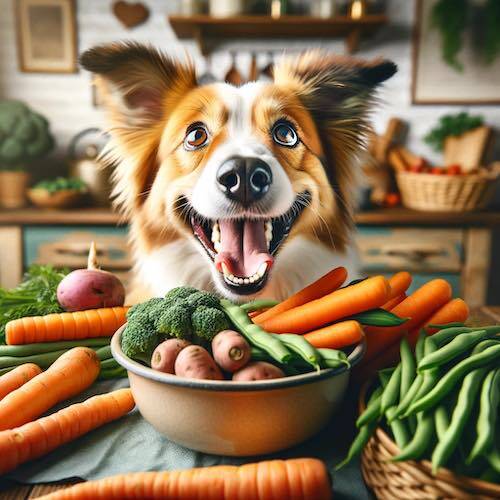
Additional Information
Portion Control
Vegetables, while nutritious, should be considered supplements to a well-rounded and balanced diet tailored for dogs, not replacements for their regular meals. Dogs have specific nutritional needs that are best met through high-quality commercial dog food or a diet formulated by veterinary nutritionists.
Vegetables can be added to provide extra nutrients and variety but should only make up a small percentage of the total diet typically no more than 10%. Overfeeding vegetables can lead to nutritional imbalances, weight gain, or gastrointestinal issues due to excess fiber.
Its also crucial to introduce any new vegetable in small quantities and observe how your dog reacts over the next 24-48 hours. This cautious approach helps identify any adverse effects, such as allergic reactions or digestive upset, which could indicate that a particular vegetable is not suitable for your pet.
Preparation
When it comes to serving vegetables to your dog, the method of preparation can significantly affect their health benefits and safety. Raw vegetables can offer crunch and retain most of their nutrients, but not all dogs can digest raw veggies easily. Steaming, baking, or roasting vegetables can make them easier to digest while preserving most of their vitamins and minerals. These cooking methods also soften the vegetables, reducing the risk of choking and making it easier for your dog to eat, especially for older dogs or those with dental issues.
Its important to prepare vegetables without any added seasonings, oils, or fats, which can be harmful to dogs. For instance, onions and garlic are toxic to dogs and should never be included in their meals. Similarly, excessive fat can lead to pancreatitis, a severe and potentially life-threatening condition.
Choking Hazards
The size and texture of the vegetables you feed your dog are crucial factors to consider to prevent choking hazards. Dogs do not chew their food as thoroughly as humans, which means large pieces of vegetables can pose a significant choking risk. Cutting vegetables into bite-sized pieces appropriate for your dogs size is a simple yet effective way to ensure they can safely enjoy their treats. For smaller dogs or breeds with smaller mouths, vegetables should be cut into smaller pieces than for larger dogs.
Furthermore, some vegetables might be harder and more difficult for dogs to break down, such as raw carrots. In such cases, lightly steaming the vegetables can make them softer and safer to eat. Always supervise your dog when they are trying a new vegetable or eating larger pieces to ensure they do not choke.
Check with Your Vet
Perhaps the most crucial step before introducing new foods into your dogs diet is to consult with your veterinarian. This is especially important if your dog has pre-existing health conditions, allergies, or dietary restrictions. Your vet can provide personalized advice based on your dogs health history and nutritional needs, ensuring that any additions to their diet will not adversely affect their health.
For dogs with specific conditions like diabetes, obesity, or kidney issues, certain vegetables may be more beneficial than others. For instance, dogs with kidney problems may need to avoid high-phosphate vegetables, whereas overweight dogs could benefit from low-calorie options like cucumbers or green beans.
Additional Tips for Incorporating Vegetables into Your Dogs Diet
- Introduce New Vegetables Slowly: Start with one type of vegetable at a time and in small quantities to monitor your dogs reaction. This careful approach helps identify any food sensitivities or preferences your dog may have.
- Mix Vegetables with Regular Food: If your dog is hesitant to try new foods, mixing finely chopped or pureed vegetables with their regular food can be an effective way to introduce them to new flavors and textures.
- Use Vegetables as Training Treats: Small pieces of vegetables can be excellent low-calorie treats for training sessions. Theyre healthy, and many dogs enjoy them as much as traditional treats.
- Monitor for Digestive Changes: Pay attention to your dogs stool and overall digestive health after introducing new vegetables. Some dogs may experience gas, bloating, or changes in bowel movements, indicating that a particular vegetable may not agree with them.
In summary, vegetables can be a wonderful addition to your dogs diet when chosen carefully and served correctly. They can provide extra nutrients, variety, and enjoyment to your dogs meals. However, always remember the importance of portion control, proper preparation, avoiding choking hazards, and consulting with your veterinarian to ensure these dietary additions are safe and beneficial for your beloved pet.
Read More: Top 10 Best Rated Dog Food Brands


